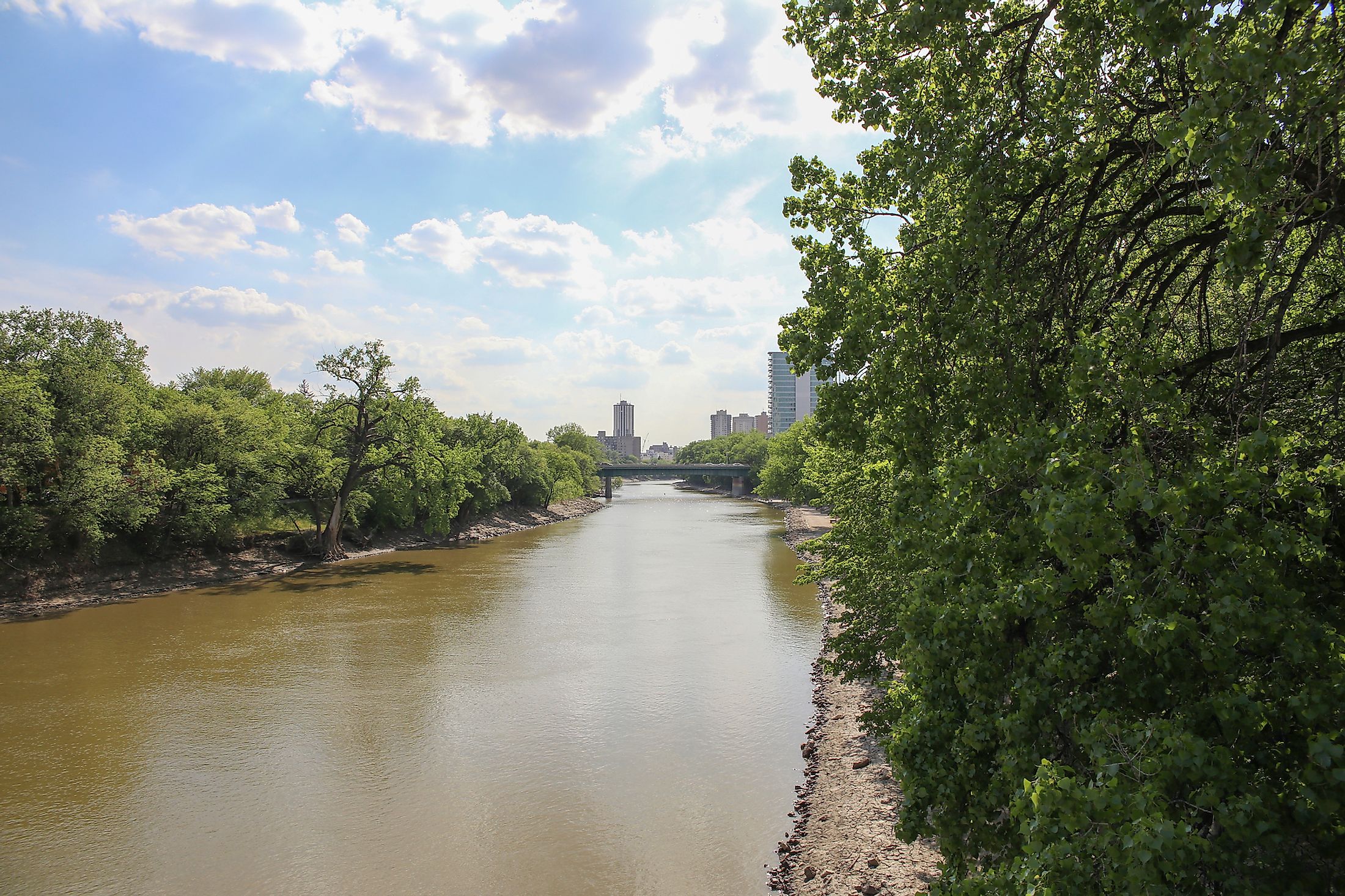
Assiniboine River
The Assiniboine River is a 1,070 kilometer-long river in the prairie region of Western Canada that rises in southeastern Saskatchewan and flows into Manitoba, where it joins the Red River in Winnipeg. It is the country’s 16th longest river and has been named after the Assiniboine Indians or “Stone Indians,” who used stones to cook their food. The river served as an important route for fur traders during the English and French periods. The Assiniboine River and the two main tributaries drain approximately 182,000 square kilometers, with the drainage basin including one of Canada’s main wheat-growing areas. Major cities drained by the river include Portage la Prairie, Brandon, and Winnipeg.
Overview of the River
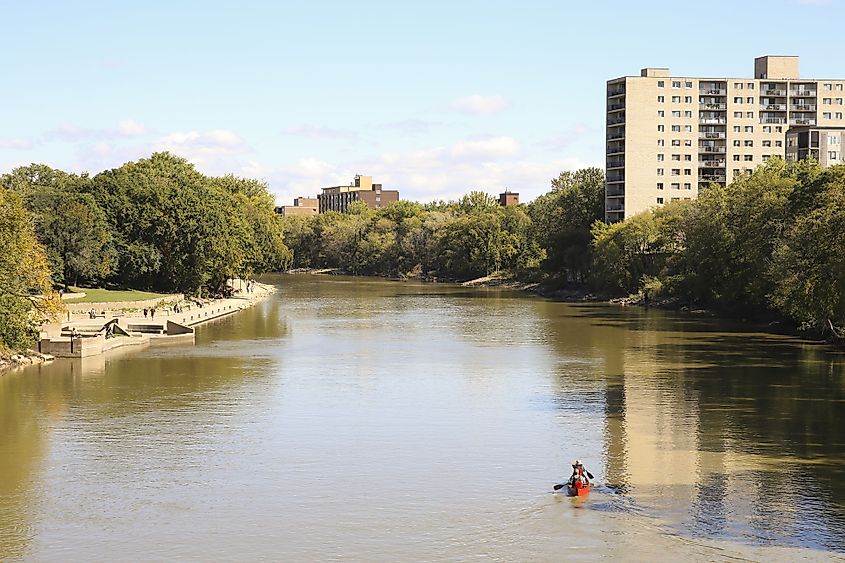
The Assiniboine River is one of the major tributaries of the Red River of the North that feeds Lake Winnipeg and flows into the Hudson Bay via the Nelson River. It begins in eastern Saskatchewan, near Kelvington, and flows through the Western Canada prairies for about 1,070 kilometers before joining the Red River at The Forks in Winnipeg, Manitoba. The Assiniboine meanders through a steep valley in some places and a flat valley in others. It receives several rivers along its course, including Whitesand, Souris, and Qu’Appelle. The river discharges an average of 45 cubic meters of water per second and forms a part of the Red River drainage basin.
Course
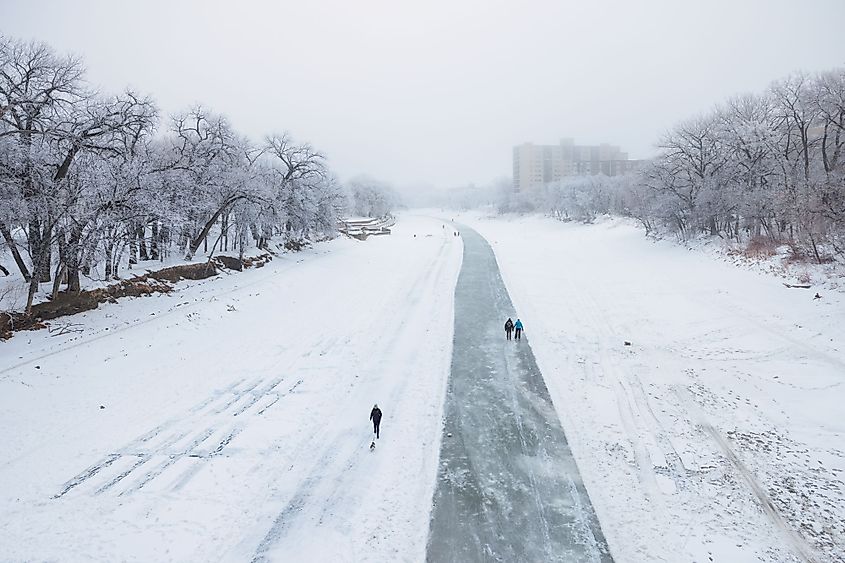
The Assiniboine River begins in the Windy Lake, located at an elevation of 640 meters, on the east of Kelvington in eastern Saskatchewan. This lake is located in the upper prairie region of the Manitoba Escarpment. The Assiniboine River flows southeastwards from the Windy Lake, then briefly turns east to Fort Pelly and resumes the southeastward journey to the Manitoba border. In Manitoba, the river runs almost parallel to the boundary line until it reaches Fort Ellice and receives the Qu’Appelle River near Saint Lazare. Then, the Assiniboine River continues in the southeastward direction and bends eastwards at Virden. It receives the waters from the Souris River near Treesbank, approximately 40 kilometers from Brandon.
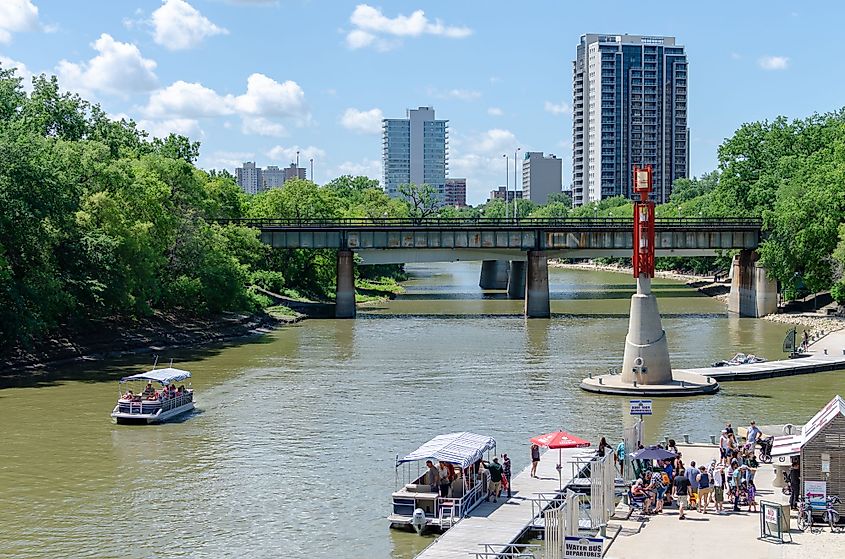
Between Brandon and Portage la Prairie, the river flows through a delta created by glacial flow and forms a narrow valley through the delta’s sediments until it reaches Lake Agassiz. The river emerges from the delta near Portage la Prairie into the flat Red River plain and flows southeastwards to meet the Red River of the North at The Forks in Winnipeg. The Red River flows northeast from the point of confluence into Lake Winnipeg. Previously, the two rivers confluenced near the mouth of the La Salle River. The Assiniboine River has maintained its current course for about 700 years.
Flood Control
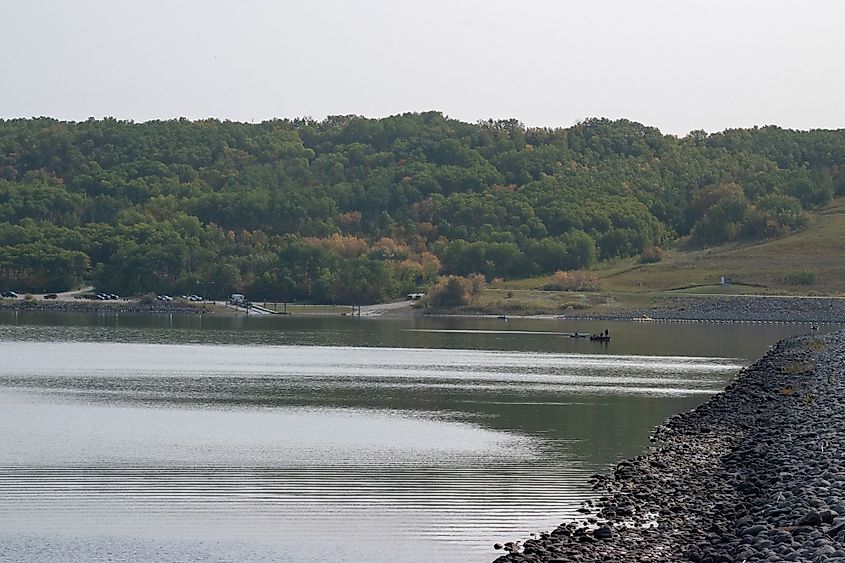
The Assiniboine River discharges an average of 45 cubic meters of water per second, with a maximum flow occurring at Portage la Prairie. Although the river is prone to floods during the spring season, the floodwater is often diverted to Lake Manitoba. The Shellmouth Dam was built in 1967 to reduce flooding along the river, especially in Winnipeg and the surrounding areas. The reservoir also feeds the river during dry seasons to ensure water availability in Portage la Prairie and Brandon. Besides the reservoir, the Portage Diversion was also constructed near Portage la Prairie to help control flooding. Despite the flood control efforts, the river breached one of the dykes and flooded parts of Portage la Prairie.










